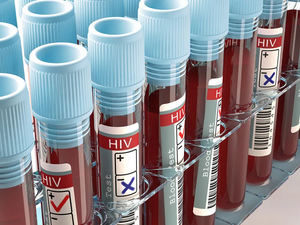Sydney, March 27 (IANS). According to a study published on Thursday, the cut in international funding for HIV prevention and treatment programs can lead to over 10 million infections and about three million deaths by 2030. This is stated in a study published in the Lancet HIV Journal on Thursday.
A study conducted by a team from the Burnett Institute in Melbourne, Australia has been model of an estimated 24 percent impact in global HIV funding by 2026. This is after the announcement of 8 to 70 percent of the assistance cut by major donors including the US, Britain, France, Germany and Netherlands. These five countries collectively fund more than 90 percent of global HIV aid.
Researchers stated that if the funding cuts proposed by the top five donor countries including the US and Britain are not reduced, it is estimated that between 2025 and 2030, children and adults may have 4.4 to 10.8 million additional new HIV infections and 770,000 to 2.9 million deaths.
The United States, which contributed to the world in the world in HIV funding, stopped all assistance on 20 January after the swearing in of new US President Donald Trump.
The study has revealed that due to the loss of the President’s Emergency Plan (PEPFAR) as well as other funding cuts for AIDS relief, there is a danger of reversing progress towards abolishing HIV/AIDS as a global health crisis by 2030.
Dr. Debra Ten Brink, co-study writer at Burnett Institute, said, “America has historically been the greatest contributor to the global efforts of HIV treatment and prevention, but the current cut in PEPFAR and USAID-backed programs has already disrupted the required HIV services and HIV’s prevention and HIV prevention and HIV’s prevention and HIV’s prevention and HIV’s prevention. Looking forward, if other donors reduce funding, decades can be useless for the treatment and prevention of HIV. ”
The findings showed that sub-Sahara Africa and marginalized groups that are already facing HIV infections, such as people injecting drugs, sexual workers and men having sex with men, as well as children will be the most affected.
The institute’s co-writer Dr. Rowan Martin-Hughes showed that in addition to limiting tests and treatment programs, the sub-Sahara Africa would see deduction in widespread prevention efforts, such as distributing condoms and pre-exposure profilexis (PREP-a drug, which reduces the risk of HIV).
“It is necessary to ensure permanent financing and avoid re-emergence of HIV epidemic, which can have disastrous consequences, not only in areas such as sub-Sahara Africa, but in the entire world.”
-IANS
CBT/
